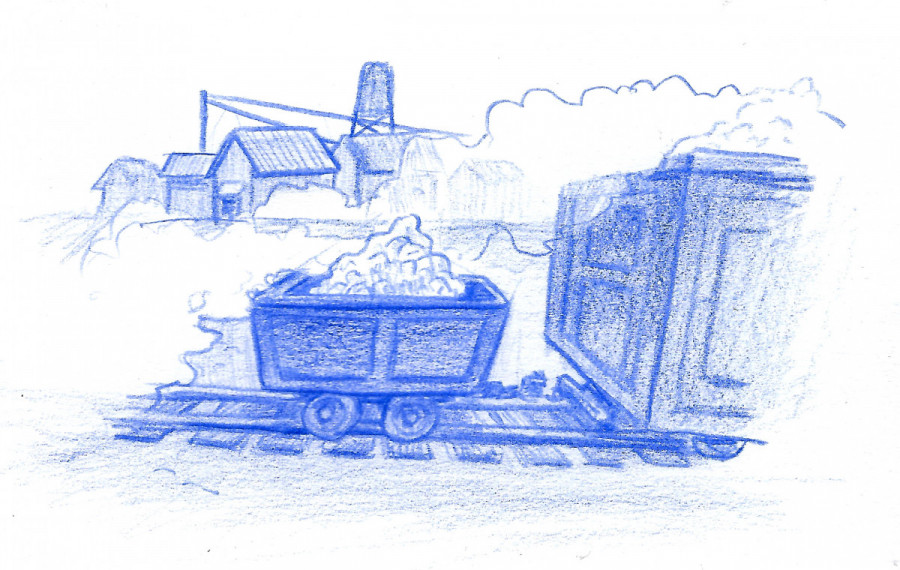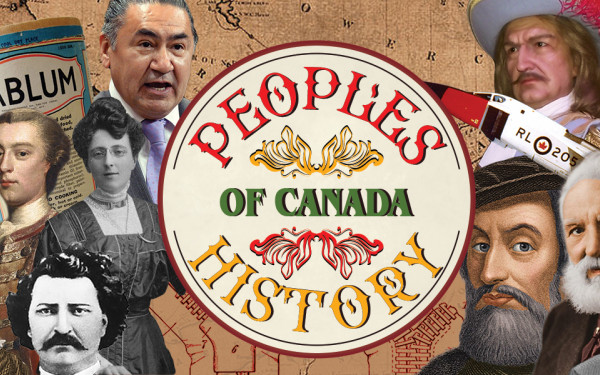When Toxic Dust Awoke a Sleepy Town: The Asbestos Strike
A People’s History of Canada Column
Although they had lost the war, as the expression goes, the workers behind the Asbestos Strike of 1949 in the Eastern Townships of Quebec did not miss the fight in leading a notable effort against Johns-Manville, an American resource extraction company.
In a time of workplace padlock laws and divisions between French and English Quebecers, the strike provoked a surge in the political consciousness province-wide.
It was the launch pad for demands for public health reform by workers facing cutthroat restrictions.
The 1949 strike primarily centered around curbing the spread of a disease called asbestosis, which is the fibrosis (hardening) of the fluid in the lungs due to the accumulation of microscopic asbestos fibres within the lungs’ lining that prevents them from expanding and contracting, which could lead to suffocation.
The Jeffrey Mine was the largest chrysotile asbestos mine in the world, and the source of the citizens of Asbestos’ glory and ruin.
During the late 1800s, asbestos began being mined commercially for its fireproof and practically indestructible properties.
It was later integrated across a variety of common household products, including hair dryers, coffee pots, and potting soil.
By 1920, Canada already began to take advantage of its mineral wealth, and was providing 84 per cent of the world’s supply of asbestos.
It was in this after World War I era that JM bought the mine from its local owners.
At first, the townspeople of Asbestos employed by JM enjoyed the fruits of their labour, as the production of asbestos provided modernity and stability to their community.
Later on in the Second World War, JM included machines deep in the Jeffrey Mine to replace human labourers.
“Men with nomadic drills are busy all the time breaking up the larger chunks of rock. On the floor of the pit, a giant electric shovel (the largest in Canada) scoops up 14 tons [of rock] […] it looks like some curious, prehistoric monster rooting about for food. This huge electric shovel is mobile, and can move to any part of the pit floor to load rail cars with rock at convenient points,” said CBC reporter J. Frank Willis in a 1942 radio clip, observing the asbestos extraction process that took place at the Jeffrey Mine.
“Men with nomadic drills are busy all the time breaking up the larger chunks of rock.”
—_J. Frank Willis_
Striking became a way for them to bargain for benefits and rights. Miners in Quebec lived in a sustained period of negotiation, using strikes as a way to communicate their needs to JM in a setting that defined workers as a hired person, which meant their status was inferior and temporary, at best.
Asbestos was one of the Quebec towns that went on strike very little, something favourable to Maurice Duplessis’ Union Nationale that assumed office in 1944.
The party was anti-union, and brought in foreign investment by selling Quebec’s labour force as a docile one that wouldn’t rise up.
In 1944, Duplessis enacted the Labour Relations Act, which allowed the government to approve or reject unions and to supervise bargaining over collective agreements.
In 1948 the workers of the Jeffrey Mine began negotiating for a labour contract that would take effect the next year.
Part of what they demanded was a $1 per hour wage, union security, a pension scheme, and a company investigation into environmental hazards that were causing asbestosis.
A report exposing the danger of asbestos-related disease was published in Le Devoir in January 1949 by investigative journalist Burton LeDoux.
It was entitled “L’amiantose: un village de trois mille âmes étouffe dans la poussière, East Broughton.”
The article was printed in pamphlet format as well as the newspaper and circulated province-wide by unions.
Many could read it and use the information provided as fuel to reinvigorate their fight for stricter safety regulations.
Union leaders set up a collective agreement negotiation based on this report, and workers later used the information contained within the report to insist on a “dust clause” that properly addressed the risks of asbestosis from harmful extraction processes.
Negotiations were deadlocked by early February.
Both parties had to enter arbitration by law, and presented the Duplessis government an opportunity to use pro-business arbitrators to their benefit.
Against the advice of their union leaders, Jeffrey Mine workers gathered at the Saint-Aimé church on Feb. 13 and voted to go on strike.
While the strikes used to negotiate in the past have been brief, LeDoux’s work had supplied fire to the workers. JM was not willing to compromise, and Jeffrey Mine workers were too desperate and informed in their push for stricter compliance in occupational safety.
The strike was illegal, as they were violating the Loi sur les relations ouvrières by not waiting for an arbitration board to be established before striking.
Duplessis sent out the provincial police.
By requesting Duplessis send the police JM brought the focus of police and media on the violent potential of protestors and the need to control them, turning attention away from the point of the strike: the hazards to workers’ health.
On March 14, an explosion occurred on the railway track leading into the local processing plant, where JM had hired replacement workers during the strike and thereafter, a group of strikers abducted and beat up an official from JM.
Asbestos didn’t look like the usual quiet, small town it had been when the police intervention started during the strike.

Police gathered to break picket lines and attacked strikers with tear gas and fired warning shots.
It was on May 6, 1949 that heavily armed police stormed the town, arrested several men and severely beat them.
Several factors eventually spelled the end of the strike.
JM was resilient in covering up and falsely reporting the safety of asbestos dust.
Moreover, as a result of the strike, workers had lost more than $ 1.5 million in wages.
Throughout the second half of 1949, there were a series of arbitration meetings to settle the dispute and have both parties come to a solution on how to make the asbestos mining process safer.
While the JM company doctor Kenneth Smith and JM lawyer J. P. Woodard used evidence from studies to attempt to draw company attention towards the health hazards of asbestos, JM sought to hide the evidence.
The two sides agreed to a collective document on July 1.
While in later years, the workers were given protective gear to wear on-site, it was optional, and their material gains from the strike were slight.
Many workers lost their jobs because of the strike, and very few solutions were brought forward to alleviate the life-threatening asbestosis-related working conditions that would claim many lives throughout time.
While the Asbestos Strike did not produce the intended result of a highly-unionized Quebec mining industry with proper workplace-health regulations and practices in place, it set a precedent for other union-driven movements and introduced public health as a key issue at the negotiation table of workplace standards.
Environmental health became the launch pad in which workers could up the ante in their struggle to improve their lives and lessen the risk of dangerous substances on themselves and their families.
Currently, the Jeffrey Mine is shut down, and the Canadian asbestos industry is abandoned.
Asbestos itself is now considered an outdated and extremely dangerous material when used in the insulation as a fireproof material.
One could say that asbestos now has a bleak existence.
Once a world-class product used to protect and raise a healthy society, it is now known as a deadly monster responsible for the sickness and suffering of children, workers, and citizens alike.
Whether a worker-driven initiative will see its intended political and societal changes come to fruition or not, it is an inalienable right to halt harmful corporations that hoard wealth and disregard the safety of their workers.
It is imperative to keep labour conditions in check and remind these corporations that workers will always be a central consideration in labour affairs.
It is the most impactful move of the working class.


_600_832_s.png)




